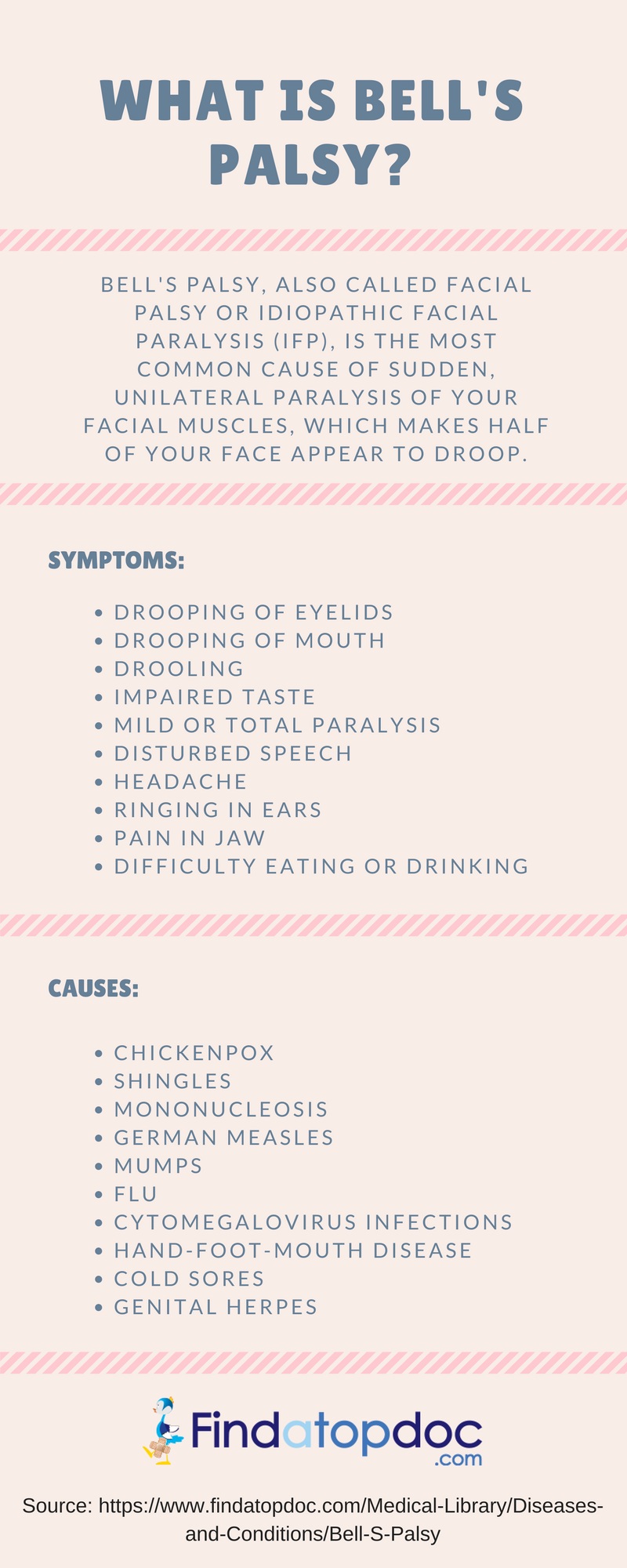This form of temporary paralysis occurs due to damage or trauma to the facial nerve, also called the 7th cranial nerve.
In this condition, the functions of the facial nerve get disrupted resulting in interrupted messages between the brain and the facial muscles.
This causes facial weakness or paralysis. Usually, Bell's palsy affects one of the paired facial nerves and hence only one side of your face, but in some cases, it may affect both sides.

Source
Symptoms
Signs and symptoms of Bell's palsy vary in each person and appear all of a sudden. These includes:
- Rapid development of mild weakness to total paralysis affecting only one side of your face - occurring within hours to days
- Drooping of your eyelids and corner of the mouth
- Difficulty in making facial expressions, such as closing your eyes or smiling
- Drooling
Causes
Although the exact cause of Bell's palsy is not known, it is often related to exposure to a viral infection.
Viruses that have been linked with Bell's palsy include the viruses that cause the following conditions:
- Cold sores and genital herpes (herpes simplex)
- Chickenpox and shingles (herpes zoster)
- Mononucleosis (Epstein-Barr)
- Cytomegalovirus infections